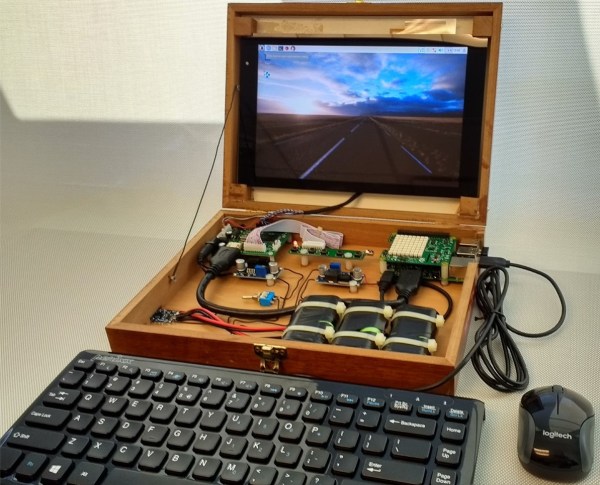The Compu-tor, designed by [Henry Edwards], is one of those things that doesn’t neatly fit into any categories. It is a clamshell-type portable computer, although unlike most laptops, it doesn’t come with a built-in battery. It has a sleek custom-designed case, but lacks the futuristic sci-fi looks typical of a cyberdeck. The keyboard can act as an input device, but can also turn into a musical instrument.
In short, it’s a bit of all of those things, but the most striking part is the beautifully-machined mahogany case. The two halves are connected through two beefy friction hinges and a silicone ribbon cable: the bottom half contains the keyboard, speakers, USB ports and power connections, while the top half holds a Raspberry Pi and a 10″ touchscreen. The display bezel has that curved shape typical of CRT monitors, fitting nicely with the 1970s vibe given off by the dark wood.
Another retro touch is in the connections between the various circuit boards and the front panel switches: [Henry] used wire-wrapping, something we haven’t seen for a while. The keyboard is a simple grid of identical keys with handwritten labels. Other labels, like that of the power connector, are made from traditional embossing tape.
The Compu-tor runs Debian, and seems to be quite usable as a compact laptop. It even comes with USB ports to hook up external devices, and with a simple 12 V input it should be no problem to find an external power source for it. Wood seems to be a popular material to build Raspberry Pi-based laptops from: we’ve seen them housed in anything ranging from wooden cigar-boxes to laser-cut plywood, and even incredibly tiny boxes.
Continue reading “The Compu-tor Is A Raspberry Pi Laptop In A Mahogany Case”

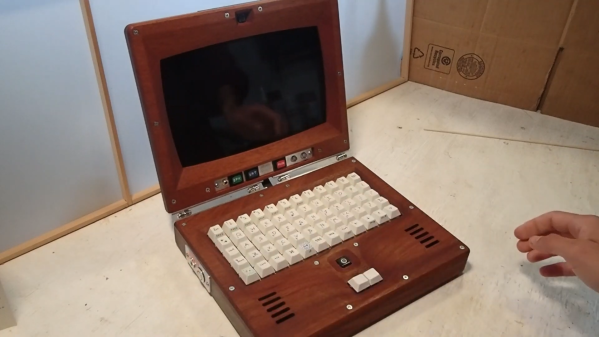
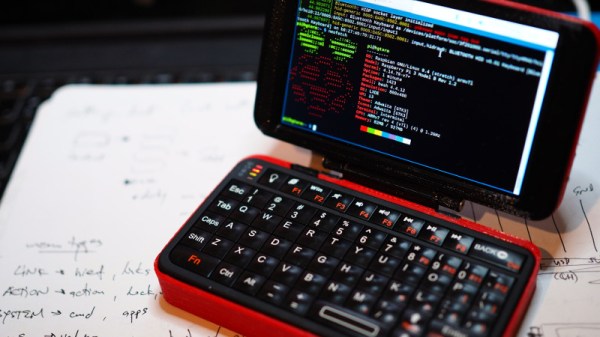
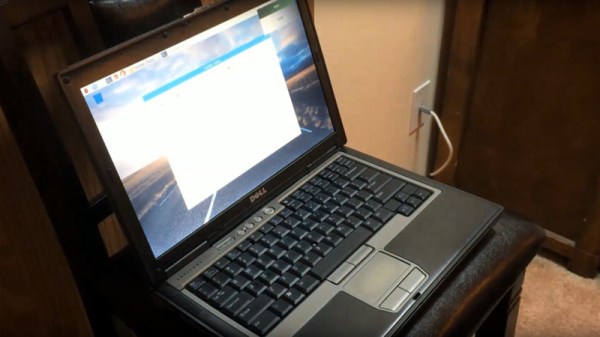

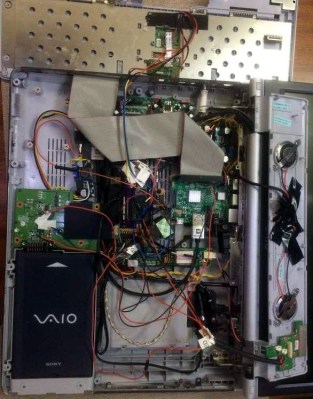


![Does [Eben] carry a silver marker with him, laptops for the signing of?](https://hackaday.com/wp-content/uploads/2017/03/archie-with-laptop.jpg?w=300)
